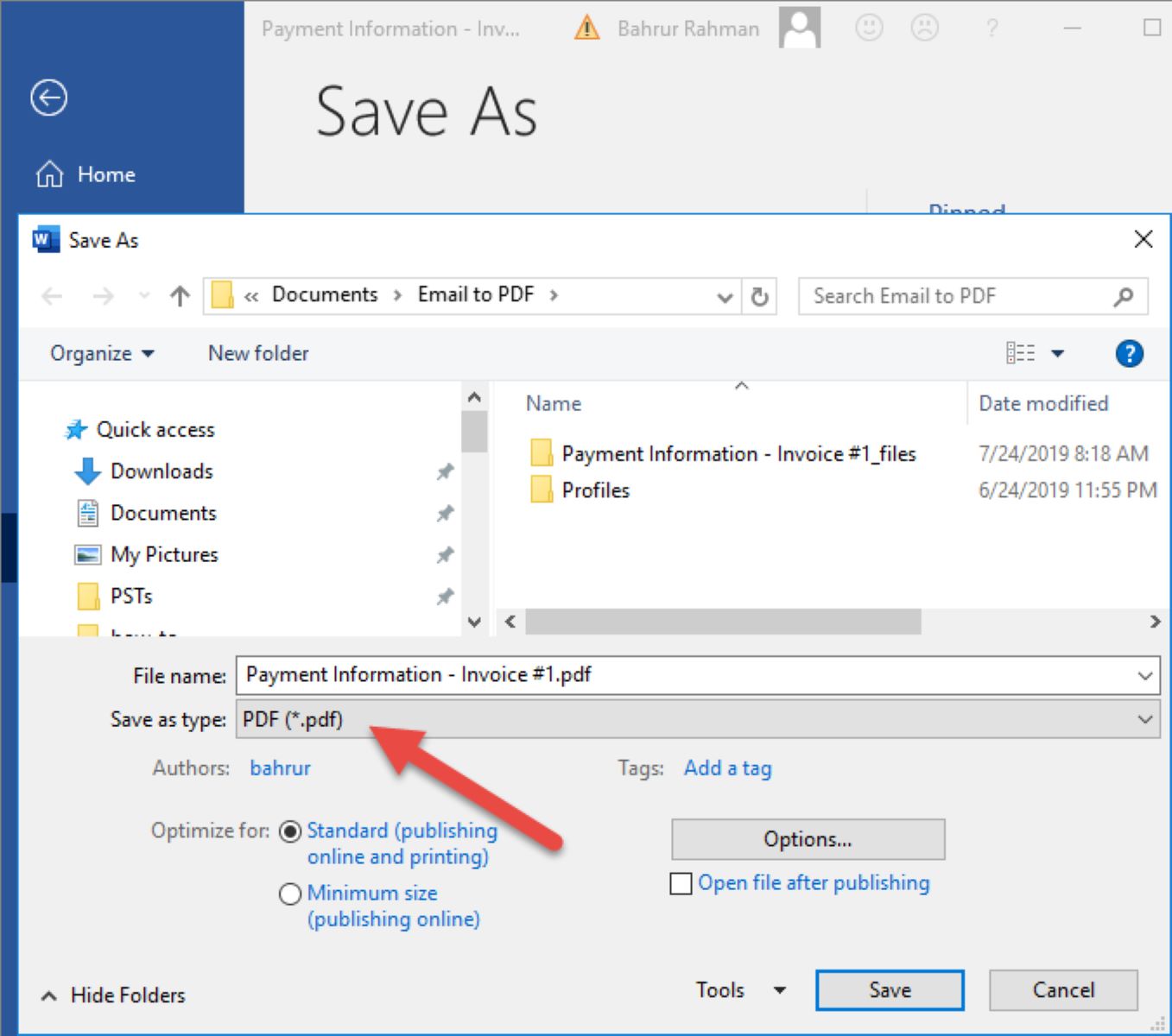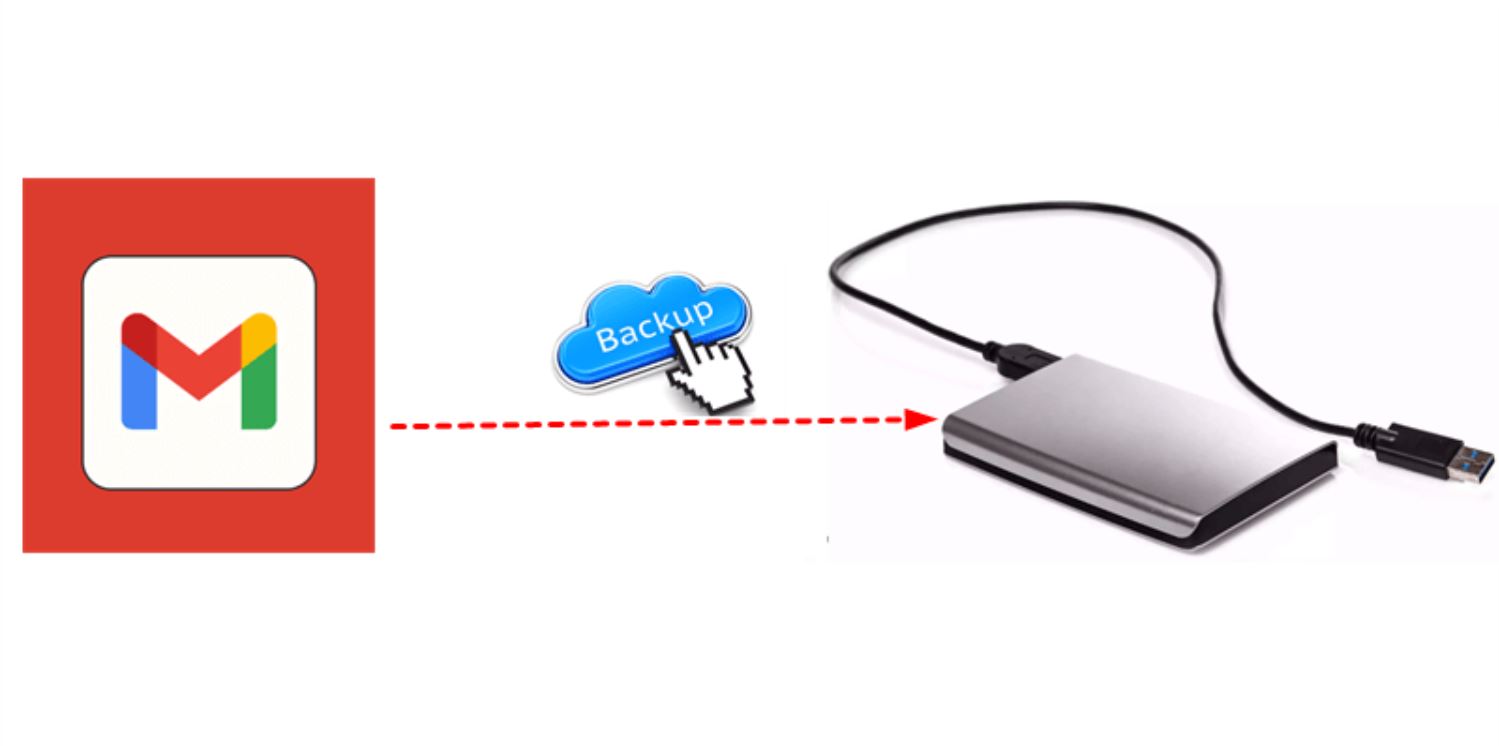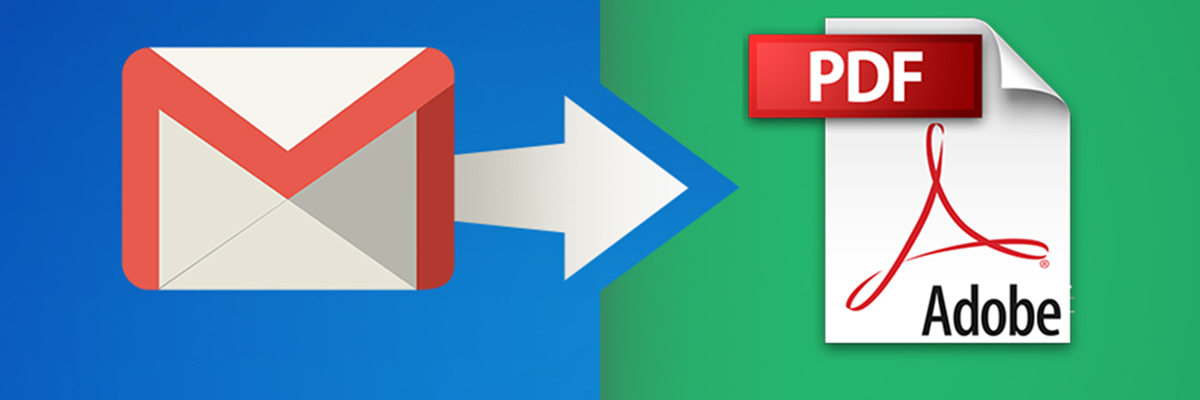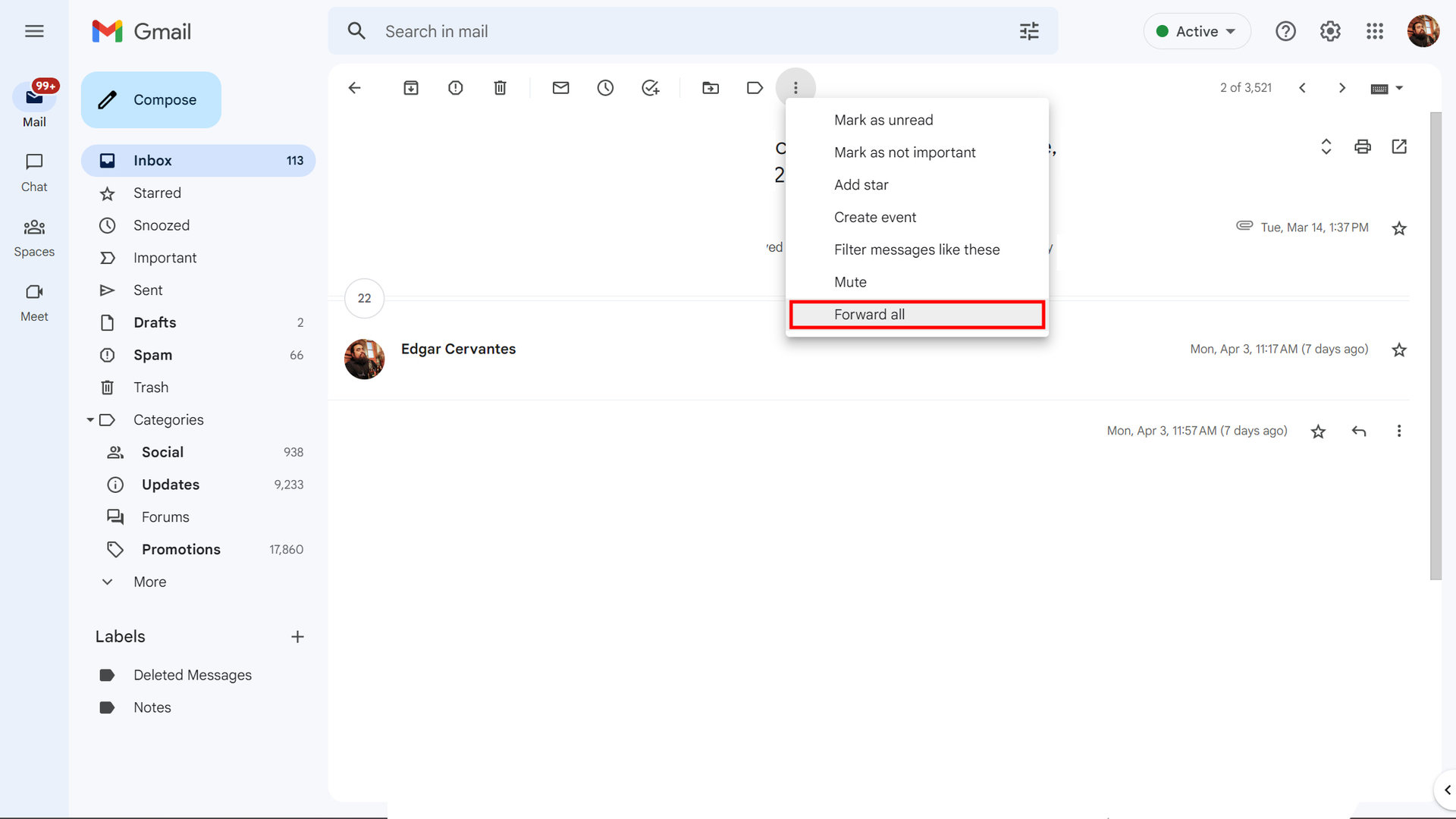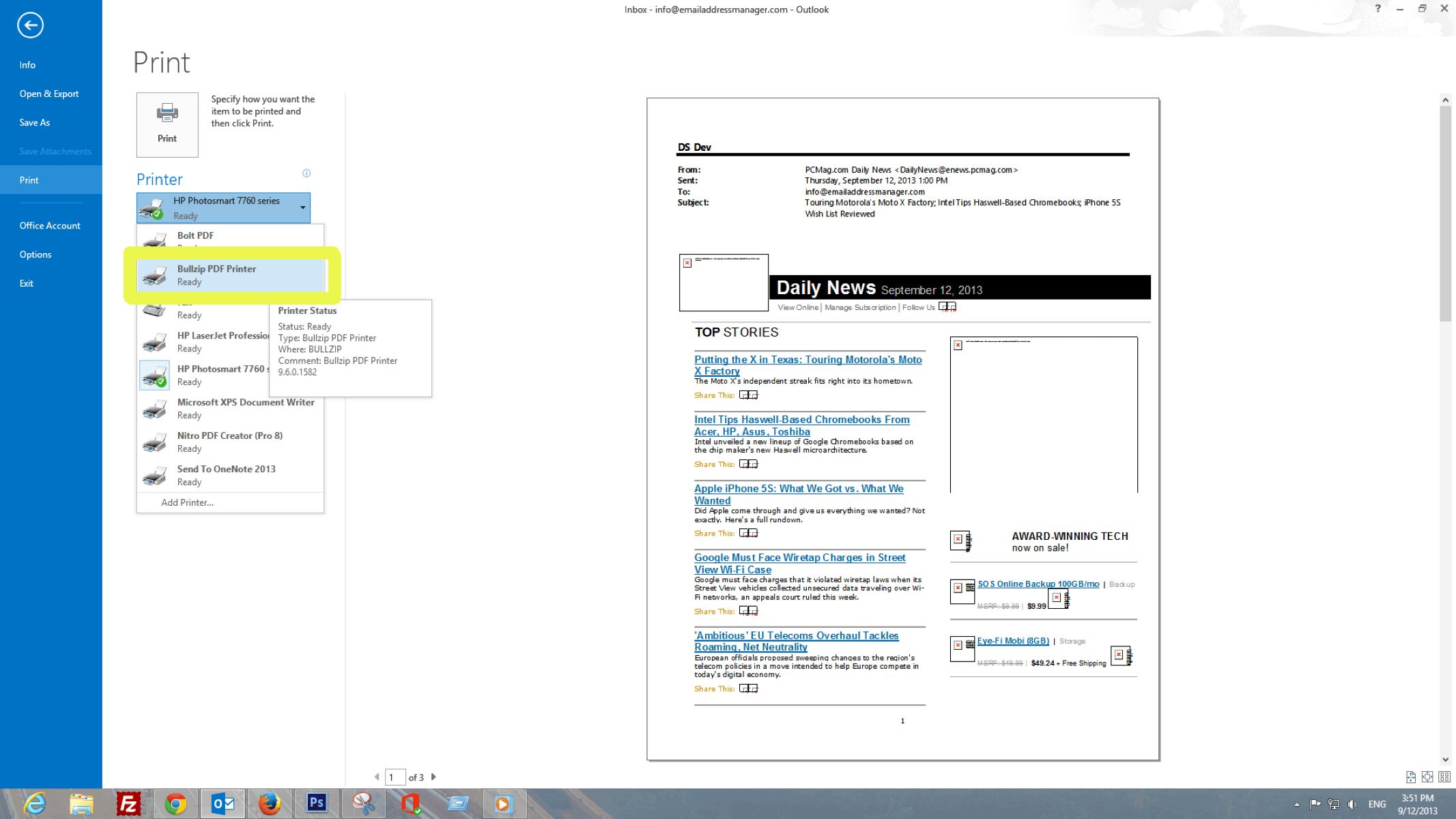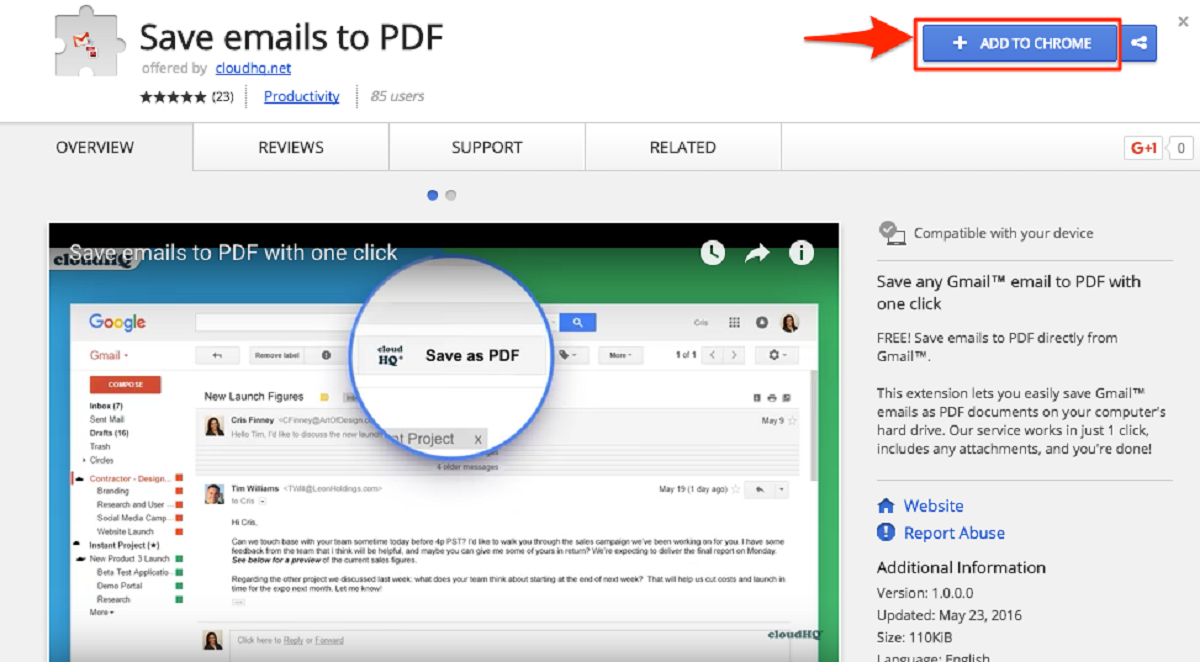Introduction
Welcome to our guide on how to save emails! In today’s digital world, emails have become an essential mode of communication, allowing us to stay connected with colleagues, clients, and loved ones. However, it’s not always easy to keep track of important emails or access them when needed. That’s where saving emails becomes crucial.
Whether you need to save emails for legal or business purposes, to declutter your inbox, or simply to have a backup of important conversations, knowing how to save emails effectively can be a game-changer. In this comprehensive guide, we will explore various methods to save emails on different email providers and outside of your email provider.
Our step-by-step instructions will walk you through the process of saving emails on popular platforms such as Gmail, Outlook, Yahoo Mail, and Apple Mail. Additionally, we’ll discuss other ways to save emails, including saving them as PDF files, text files, in the cloud, and to your computer. By the end of this guide, you’ll have a range of options to choose from, ensuring your emails are safely stored and easily accessible.
We understand that everyone’s needs are different, so we’ll provide you with the necessary information to make an informed decision about the best method for you. Whether you’re a business professional, a student, or simply an email enthusiast, this guide is for you.
Without further ado, let’s dive into the world of email saving and discover the various techniques at your disposal.
Why should you save emails?
Saving emails may not be something you think about regularly, but there are several significant reasons why you should consider doing so. Let’s explore some of the key benefits:
- Legal and compliance: In certain industries, it is crucial to retain copies of important emails for legal and compliance purposes. This may include contractual agreements, client communications, or evidence of business transactions. Saving emails provides you with a reliable record that can be accessed whenever needed.
- Reference and documentation: Emails often contain crucial information, such as instructions, project details, or important conversations. By saving these emails, you create a documentation trail that can be referred back to whenever necessary. This can be especially helpful for future reference, training new team members, or resolving potential disputes.
- Archiving and decluttering: Over time, our email inboxes can become cluttered with a plethora of messages, making it challenging to find specific information. By saving important emails, you can declutter your inbox and organize your emails more effectively. This allows for better email management and reduces the risk of important messages getting lost or overlooked.
- Backup and disaster recovery: Imagine if your email account was compromised or if the email server experienced technical issues. Without a backup of your important emails, you could potentially lose critical information or valuable conversations. Saving emails to an external location provides an added layer of protection and ensures you have a backup in case of unforeseen circumstances.
- Sharing and collaboration: Saving emails can also facilitate seamless sharing and collaboration. Whether it’s sharing project updates, feedback, or important information with team members or clients, having saved emails can serve as a valuable resource. You can easily forward or reference specific emails, ensuring all parties are on the same page.
- Peace of mind: When you save your emails, you gain peace of mind knowing that important conversations and information are safely stored. This relieves the stress of relying solely on your email provider for data retention and gives you control over your own digital history.
As you can see, the benefits of saving emails are extensive. Whether it’s for legal compliance, documentation, organization, backup, or collaboration purposes, taking the time to save emails can prove to be immensely valuable in the long run.
Now that we understand the importance of saving emails, let’s move on to explore the different methods you can use to save emails on various email providers and alternative solutions outside of your email provider.
How to save emails on different email providers
Saving emails on different email providers can vary slightly depending on the platform you use. In this section, we will walk you through the steps to save emails on popular email providers such as Gmail, Outlook, Yahoo Mail, and Apple Mail. Let’s get started!
Saving emails on Gmail
Gmail provides multiple options for saving emails:
- Archive: If you want to keep an email for future reference without cluttering your inbox, you can archive it. Archiving removes the email from your inbox but retains it in the “All Mail” section.
- Labeling: Gmail allows you to create labels to organize your emails. You can create specific labels for important emails and assign them to relevant conversations. This makes it easier to locate and retrieve saved emails later.
- Downloading: To save an individual email as a file on your computer, you can download it. Simply open the email, click on the three-dot menu, and select “Download message.”
- Offline Access: Gmail offers offline access through the Gmail Offline Chrome app. By enabling this feature, you can access your emails and save them locally on your device even when you’re offline.
Saving emails on Outlook
Outlook provides several options for saving emails:
- Archiving: Similar to Gmail, you can archive old or less important emails on Outlook to keep your inbox organized. The archived emails will be stored in the “Archive” folder.
- Save as File: To save an email as a separate file on your computer, you can choose the “Save As” option from the File menu. You can save it in various formats like HTML, TXT, or MSG.
- Dragging and Dropping: Another convenient method is to drag and drop the email from your Outlook mailbox to a folder on your computer to save it as a file.
- Saving to OneNote: If you use Microsoft OneNote, you can save emails directly to your desired OneNote notebook for future reference.
Saving emails on Yahoo Mail
Yahoo Mail offers the following options for saving emails:
- Folder Organization: Yahoo Mail allows you to create folders to organize your emails. You can create specific folders for saving important emails and move them there for easy access.
- Download: To save an email on your computer, open the email, click on the “More” icon (three dots), and select “Download Message.” The email will be saved as an .eml file on your device.
Saving emails on Apple Mail
Apple Mail, the default email client for Mac devices, offers a straightforward way to save emails:
- Save as PDF: Open the email you want to save, go to the “File” menu, and select “Print.” In the print dialog, click on the “PDF” dropdown menu, and choose “Save as PDF” to save the email as a PDF file on your computer.
- Saving to a Folder: You can also save emails by dragging and dropping them from your Apple Mail inbox to a folder on your computer.
Each email provider offers different methods for saving emails, so make sure to explore the options available on the platform you use. These methods provide you with the flexibility to save and organize your emails according to your specific needs.
In the next section, we will discuss alternative ways to save emails outside of your email provider. Keep reading to discover more!
Saving emails on Gmail
Gmail, one of the most popular email providers, offers various options for saving emails. Whether you want to declutter your inbox or keep important conversations for future reference, Gmail provides the tools you need. Let’s explore how you can save emails on Gmail:
- Archive: One of the simplest ways to save emails in Gmail is by archiving them. Archiving removes the email from your inbox but retains it in the “All Mail” section. To archive an email, select the email and click on the archive button (represented by a folder with a down arrow) or press the “E” key on your keyboard. Archived emails can be easily accessed by searching for specific keywords or by navigating to the “All Mail” section.
- Labeling: Gmail allows you to create labels to organize your emails. Labels work like folders, allowing you to categorize and group related emails together. To save an email under a specific label, select the email, click on the labels button (represented by a tag icon), and choose the desired label or create a new one. This makes it easier to locate and retrieve saved emails later.
- Downloading: If you wish to save an individual email as a separate file on your computer, Gmail offers the option to download it. Open the email you want to save, click on the three-dot menu icon, and select “Download message.” The email will be saved as an .eml file, which you can then access and open on your computer using compatible email clients.
- Offline Access: Gmail provides offline access through the Gmail Offline Chrome app. By enabling this feature, you can access your emails and save them locally on your device even when you’re offline. Any changes or modifications you make while offline will automatically sync when you’re back online. To enable offline access, go to your Gmail settings, select the “Offline” tab, and follow the instructions to set it up.
By utilizing these features, you can save emails on Gmail in a way that suits your preferences and needs. Whether you choose to archive, label, download, or access your emails offline, Gmail provides seamless options for managing and saving your important messages.
Now that you know how to save emails on Gmail, let’s move on to the next section, where we’ll explore different methods for saving emails on other popular email providers. Continue reading to expand your knowledge!
Saving emails on Outlook
Outlook, a widely used email client by Microsoft, offers several options for saving emails. Whether you want to declutter your inbox or archive important conversations, Outlook provides versatile features to help you save and organize your emails. Let’s explore how you can save emails on Outlook:
- Archiving: One of the simplest ways to save emails in Outlook is by archiving them. Archiving allows you to move older or less important emails out of your inbox and into the “Archive” folder. To archive an email, select the email and click on the archive button (represented by a folder with a down arrow) or right-click on the email and choose “Archive” from the context menu. The archived emails can be accessed by navigating to the “Archive” folder.
- Save as File: If you want to save a specific email as a separate file on your computer, you can use the “Save As” option in Outlook. Open the email you want to save, go to the “File” menu, and select “Save As.” Choose the desired file format (such as HTML, TXT, or MSG), specify the location where you want to save the email, and click “Save.” The email will be saved as a separate file that you can access and open on your computer.
- Dragging and Dropping: Another convenient method to save emails in Outlook is by dragging and dropping them from your mailbox to a folder on your computer or network drive. Simply select the email, click and hold the mouse button, drag the email to the desired folder location, and release the mouse button. The email will be saved in the folder as a separate file.
- Saving to OneNote: If you use Microsoft OneNote for note-taking and organization, you can save emails directly to your desired OneNote notebook. Open the email you want to save, go to the “Move” tab in Outlook, and click on “OneNote.” Select the destination section or page in OneNote, and click “OK.” The email will be saved as a new note in your chosen OneNote location.
By utilizing these features, saving emails on Outlook becomes a seamless process. Whether you choose to archive, save as a file, drag and drop, or save to OneNote, Outlook offers versatile options to help you manage and organize your important emails.
Now that you know how to save emails on Outlook, let’s move on to the next section, where we’ll explore different methods for saving emails on other popular email providers. Continue reading to expand your knowledge!
Saving emails on Yahoo Mail
Yahoo Mail, a popular email provider, offers convenient options for saving emails. Whether you want to organize your inbox or keep important conversations for future reference, Yahoo Mail provides features to help you save and manage your emails. Let’s explore how you can save emails on Yahoo Mail:
- Folder Organization: One of the simplest ways to save emails in Yahoo Mail is by creating folders. Folders allow you to categorize and organize your emails based on different criteria. To save an email in a specific folder, select the email, click on the “Move” button (represented by a folder icon), and choose the desired folder from the list. The email will be moved to the selected folder, making it easier to locate and access later.
- Download: If you wish to save an email as a file on your computer, Yahoo Mail provides the option to download it. Open the email you want to save, click on the “More” icon (represented by three dots), and select “Download Message.” The email will be downloaded as an .eml file to your computer’s default download location. You can then open the file using compatible email clients or email viewers.
By using these features, you can easily save and organize your emails in Yahoo Mail. Whether you choose to create folders or download emails as separate files, Yahoo Mail provides simple yet effective options to manage and save your important messages.
Now that you know how to save emails on Yahoo Mail, let’s move on to the next section, where we’ll explore different methods for saving emails on other popular email providers. Keep reading to enhance your knowledge!
Saving emails on Apple Mail
Apple Mail, the default email client for Mac devices, provides convenient ways to save emails. Whether you want to create backups or reference important conversations, Apple Mail offers features to help you save and manage your emails. Let’s explore how you can save emails on Apple Mail:
- Save as PDF: One of the easiest ways to save emails in Apple Mail is by saving them as PDF files. To do this, open the email you wish to save, go to the “File” menu, and select “Print.” In the print dialog box, click on the “PDF” dropdown menu, and choose “Save as PDF.” Select the desired location on your computer to save the email as a PDF file. This allows you to preserve the formatting and attachments of the email for future reference.
- Saving to a Folder: If you want to save emails as separate files on your computer, you can simply drag and drop them from Apple Mail to a folder on your Mac. Open the email you wish to save, click and hold the mouse button, drag the email to the desired folder location, and release the mouse button. Apple Mail will create a separate file for the email in the designated folder. This method helps you keep your emails organized and easily accessible on your computer.
By utilizing these features, you can effectively save and manage your emails in Apple Mail. Whether you choose to save emails as PDF files or drag and drop them into folders, Apple Mail offers straightforward options to help you keep track of important conversations and preserve your emails for future reference.
Now that you know how to save emails on Apple Mail, let’s move on to the next section, where we’ll explore alternative ways to save emails outside of your email provider. Keep reading to broaden your options!
How to save emails outside of your email provider
Saving emails outside of your email provider can provide an extra layer of protection and flexibility. By saving emails to external locations, you can ensure access to your important messages even if you change email providers or encounter technical issues. Let’s explore some alternative ways to save emails outside of your email provider:
- Saving emails as PDF files: One of the most common methods to save emails outside of your email provider is by converting them into PDF files. Most email clients and web-based email services have the option to save emails as PDF. By saving emails as PDF files, you preserve the formatting, attachments, and content of the email in a widely compatible format that can be opened and viewed on any device.
- Saving emails as text files: Another option is to save emails as plain text files. While text files may not retain the visual elements and attachments of the original email, they provide a lightweight and easily accessible format for storing the content of the email. To save an email as a text file, you can select the email, go to the “File” menu, and choose the “Save As” or “Export” option, then select the text file format (such as .txt) and the desired location to save the file.
- Saving emails in the cloud: Cloud storage services like Google Drive, Dropbox, or OneDrive offer a convenient option for saving and organizing your emails. You can create dedicated folders for different email conversations or categories and upload email files or attachments to these folders. This allows you to access and manage your saved emails from any device with internet access.
- Saving emails to your computer: If you prefer local storage, you can save emails directly to your computer’s hard drive. This can be done by using the email client’s built-in export or save options, such as saving emails as files (e.g., .eml format) or exporting them to a specified folder. By saving emails to your computer, you have full control over the storage and can easily back up or transfer the emails as needed.
Each of these methods offers unique advantages, so choose the one that aligns with your specific needs and preferences for saving emails outside of your email provider. Consider factors such as accessibility, compatibility, storage capacity, and security when making your decision.
Now that we’ve explored alternative ways to save emails outside of your email provider, let’s move on to the next section where we’ll discuss best practices for organizing and labeling your saved emails. Read on to learn valuable tips for better email management!
Saving emails as PDF files
One of the most common methods to save emails outside of your email provider is by converting them into PDF files. Saving emails as PDFs preserves the formatting, attachments, and content of the original email in a widely compatible format that can be opened and viewed on any device. Let’s explore how you can save emails as PDF files:
1. Email clients: Many email clients, both desktop-based and web-based, offer built-in options to save emails as PDF files. Typically, you can select the email you want to save, go to the “File” menu, and choose the “Save As” or “Export” option. In the save dialog, select the PDF format (.pdf) and specify the location where you want to save the PDF file. This method is convenient if you frequently need to save individual emails or specific conversations.
2. Print to PDF: Another common method is to use the “Print” functionality of your operating system or email client to save emails as PDFs. Open the email you want to save, go to the “File” menu, and select “Print.” In the print dialog, choose the “Save as PDF” option. You can adjust the settings and choose the desired location to save the PDF file.
3. Email to PDF conversion services: There are also online services and third-party software available that specialize in converting emails to PDF format. These services often provide additional features such as batch conversion, customizable output settings, and integration with cloud storage platforms. You can upload the email file or provide the email’s URL to generate a PDF file that can be downloaded and saved to your device.
Saving emails as PDF files offers several advantages. Firstly, PDF files are universally compatible and can be opened on any device with a PDF reader. Secondly, they preserve the original formatting, including embedded images and attachments, ensuring the integrity of the email’s content. Additionally, PDF files are typically compact in size, making them easy to store and share.
Remember to organize and label your saved PDF files to easily locate and retrieve specific emails in the future. You can sort them by date, sender, subject, or any other relevant criteria based on your needs.
By saving emails as PDF files, you create a portable and secure archive of your important communications, allowing you to access and reference them even if you switch email providers or encounter technical issues.
Now that you know how to save emails as PDF files, let’s move on to the next section, where we’ll discuss the option of saving emails as text files. Keep reading to expand your knowledge!
Saving emails as text files
Another method for saving emails outside of your email provider is to save them as text files. While text files may not retain the visual elements and attachments of the original email, they provide a lightweight and easily accessible format for storing the content of the email. Let’s explore how you can save emails as text files:
1. Email clients: Many email clients offer the option to save emails as plain text files. To save an email as a text file, select the email or conversation, go to the “File” menu, and choose the “Save As” or “Export” option. In the save dialog, select the Text format (.txt) and specify the location where you want to save the text file. The email’s content, including the text and basic formatting, will be saved as a plain text file that can be opened with any text editor.
2. Email viewers: If your email client doesn’t have a built-in option to save emails as text files, you can use specialized email viewers or converters. These tools allow you to import email files or connect to your email account and export emails as plain text files. These viewers often provide additional features such as batch conversion or the ability to extract attachments separately.
Saving emails as text files offers several advantages. Firstly, text files are universally compatible and can be opened on any device with a text editor. They are lightweight and do not require special software or applications. Secondly, text files are easily searchable, allowing you to locate specific information within the email content quickly. Additionally, text files are typically small in size, making them easy to store, share, and backup.
Remember to organize and label your saved text files so that you can easily retrieve specific emails in the future. You can create folders based on different categories, dates, or specific projects to keep your saved emails organized.
It’s important to note that saving emails as text files may not preserve advanced formatting, embedded images, or attachments. If these elements are crucial for your archived emails, consider alternative formats such as PDF files or specialized email backup solutions.
By saving emails as text files, you create a lightweight and easily accessible archive of your important communications, ensuring you can access and reference them anytime, even without an email client or internet connection.
Now that you know how to save emails as text files, let’s move on to explore the option of saving emails in the cloud. Keep reading to expand your knowledge!
Saving emails in the cloud
Another option for saving emails outside of your email provider is to save them in the cloud. Cloud storage services like Google Drive, Dropbox, or OneDrive offer a convenient and secure way to store and organize your emails. Let’s explore how you can save emails in the cloud:
1. Upload to cloud folders: Most cloud storage services provide the ability to create folders and subfolders. You can create dedicated folders for different email conversations, clients, projects, or any other relevant categories. Simply open the cloud storage service of your choice, create a new folder, and upload the email files or attachments to the appropriate folder. This method allows you to access and manage your saved emails from any device with an internet connection.
2. Cloud backup services: Cloud backup services specialize in automatically backing up your emails and other files to the cloud. These services often offer advanced features such as scheduled backups, encryption, and versioning. Once you set up the backup service, it will continuously back up your emails in the background, ensuring your important communications are securely stored in the cloud.
3. Email-to-cloud integration: Some cloud storage services offer direct integration with email clients, allowing you to save emails directly from your inbox to the cloud. This integration simplifies the process of saving and organizing emails. You can usually find these integrations as add-ons or extensions within your email client’s settings or app marketplace.
Saving emails in the cloud offers several advantages. Firstly, it provides the convenience of accessing your saved emails from anywhere with an internet connection. Secondly, it offers a secure storage solution, protecting your emails from accidental deletion, hardware failure, or other risks. Additionally, cloud storage services often provide ample storage capacity, so you don’t have to worry about running out of space for your archived emails.
Remember to organize and label your saved emails within your cloud storage platform to easily locate and retrieve specific emails in the future. Use descriptive folder names and tags to categorize your emails effectively.
Before saving emails in the cloud, it’s crucial to familiarize yourself with the privacy and security features of the specific cloud storage service you choose. Ensure that it meets your requirements in terms of encryption, data protection, and compliance with regulations and privacy laws.
By saving emails in the cloud, you create a flexible, accessible, and secure archive of your important communications, allowing you to access and manage them from anywhere at any time.
Now that you know how to save emails in the cloud, let’s move on to the next section, where we’ll discuss saving emails to your computer. Keep reading to expand your knowledge!
Saving emails to your computer
If you prefer local storage and want complete control over your saved emails, saving them directly to your computer is a reliable option. By saving emails to your computer, you can create backups, access them offline, and easily transfer them to other devices. Let’s explore how you can save emails to your computer:
1. Save as files: Most email clients allow you to save individual emails as separate files on your computer. To do this, open the email you want to save, go to the “File” menu, and choose the “Save As” or “Export” option. Select the desired file format (such as .eml or .msg), specify the location where you want to save the file, and click “Save.” The email will be saved as a separate file on your computer’s hard drive, which you can access and open with compatible email clients or viewers.
2. Drag and drop: Another convenient method for saving emails to your computer is to use the drag and drop functionality. Select the email or multiple emails you want to save, click and hold the mouse button, drag the emails to a folder on your computer, and release the mouse button. The emails will be saved as individual files in the designated folder. This method works well if you want to save multiple emails at once or if you prefer a more visual and intuitive approach.
3. Offline email clients: Offline email clients, such as Microsoft Outlook and Mozilla Thunderbird, provide the ability to download and store your emails directly on your computer’s hard drive. These clients sync with your email accounts, allowing you to access and manage your emails offline. By using an offline email client, you have complete control over your email storage and can save and organize your emails locally on your computer.
By saving emails to your computer, you have the advantage of having your important communications readily accessible, even without an internet connection. It also provides you with complete control over your email storage and allows for easy backup and migration to other devices or email clients.
Remember to organize and label your saved emails on your computer to easily locate and retrieve specific emails in the future. You can create folders based on different criteria, such as date, sender, or project, to keep your emails well-organized.
Keep in mind that saving emails to your computer means relying on your own hardware and backups for data security. It’s essential to regularly back up your computer and ensure you have a reliable backup system in place to prevent data loss.
By saving emails to your computer, you create a local and easily accessible archive of your important communications, ensuring that you have complete control over your email storage and can access them anytime.
Now that you know how to save emails to your computer, let’s move on to the next section, where we’ll discuss best practices for organizing and labeling your saved emails. Keep reading to learn valuable tips for better email management!
Best practices for organizing and labeling saved emails
Organizing and labeling your saved emails is crucial for efficient retrieval and effective email management. By implementing best practices for organization and labeling, you can easily locate specific emails, maintain a clutter-free archive, and streamline your workflow. Here are some tips to help you organize and label your saved emails effectively:
- Create folders and subfolders: Start by creating folders to categorize your emails based on different criteria, such as clients, projects, departments, or specific time periods. Within each folder, consider creating subfolders to further classify your emails. This hierarchical organization structure helps you locate emails quickly and keeps your archive well-organized.
- Use descriptive folder names: Give your folders meaningful names that accurately represent their contents. Use clear and concise labels that are easy to understand. Avoid generic names or abbreviations that may cause confusion in the future.
- Apply consistent naming conventions: Establish a consistent naming convention for your saved email files. Whether you save emails as PDFs, text files, or other formats, use a naming convention that includes relevant information such as the sender, subject, date, or a unique identifier. This makes it easier to search for and identify specific emails.
- Apply relevant tags or keywords: Depending on your email program or file management system, you may have the option to apply tags or keywords to your saved emails. Tags allow you to assign specific labels or categories to your emails, making them easier to search and filter. Use relevant keywords that represent the content, context, or purpose of the email.
- Establish a consistent folder structure: Define a consistent folder structure that aligns with your workflow and email management needs. Stick to this structure and avoid creating duplicate or unnecessary folders. Regularly review and refine your folder organization to ensure it matches your evolving requirements.
- Periodically review and purge: Regularly review your saved emails to identify and delete outdated or irrelevant messages. Purging your archive helps maintain its efficiency and prevents it from becoming cluttered over time. Set a schedule to review and clean up your folders to keep your archive streamlined.
- Backup your saved emails: It’s essential to regularly back up your saved emails to protect them from potential data loss. Consider using an external hard drive, cloud storage, or backup software to create backups of your organized email archive. This ensures that your valuable communications are safeguarded against hardware failure, accidental deletion, or other unforeseen events.
By implementing these best practices for organizing and labeling your saved emails, you can optimize your email management and streamline your workflow. A well-organized and labeled email archive helps you locate important messages quickly, improves productivity, and ensures you stay on top of your correspondence.
Now that you have learned these best practices, you are ready to effectively organize and label your saved emails. In the next section, we’ll wrap up this guide with a concise summary of what you have learned. Keep reading for a quick recap!
Conclusion
Managing and saving emails effectively is essential in today’s digital age. Whether you need to save emails for legal compliance, reference important conversations, or declutter your inbox, the methods and techniques discussed in this guide can help you achieve those goals.
We explored various ways to save emails on different email providers such as Gmail, Outlook, Yahoo Mail, and Apple Mail. Archiving, labeling, downloading, and utilizing offline access are among the techniques discussed. Additionally, we explored saving emails outside of your email provider, including options like saving emails as PDF or text files, saving them in the cloud, and saving them directly to your computer.
We emphasized the importance of incorporating best practices for organizing and labeling your saved emails. By creating a well-structured folder system, applying consistent naming conventions, using relevant tags or keywords, and regularly reviewing and purging your email archive, you can optimize your email management workflow, making it easier to locate and retrieve specific emails when needed.
Remember, the choice of how to save and organize your emails depends on your specific needs and preferences. Consider factors such as accessibility, compatibility, storage capacity, and data security when deciding on the most suitable method for you.
By implementing the techniques and best practices outlined in this guide, you can take control of your email management, declutter your inbox, and ensure important conversations and information are safely stored for future reference.
Now that you have a comprehensive understanding of how to save emails effectively, it’s time to put this knowledge into practice. Start by exploring your email provider’s options, consider alternative methods, and establish a consistent system for organizing and labeling your saved emails.
Happy email-saving!









